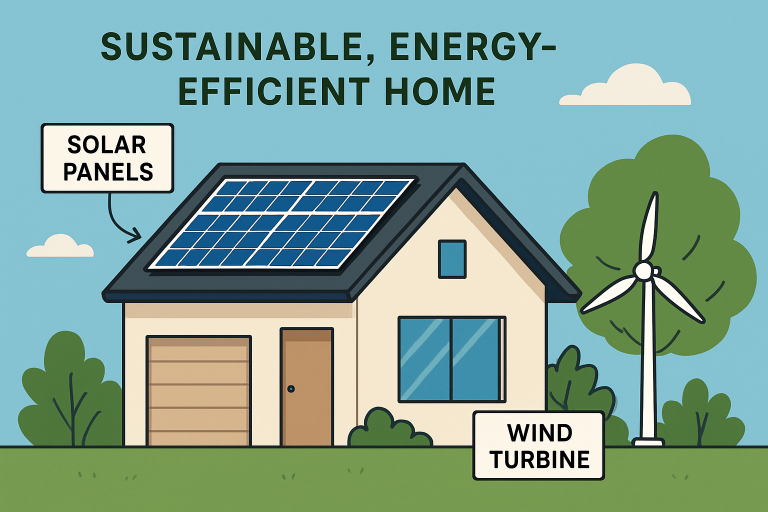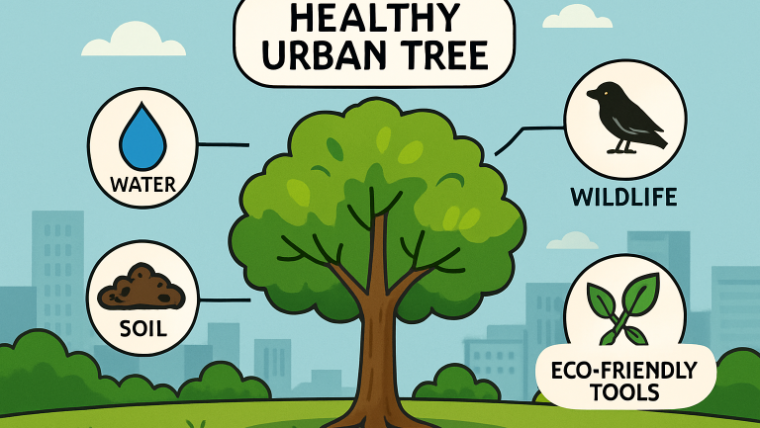Homeowners today can reimagine their energy sources by utilizing renewables such as solar, wind, geothermal, and smart technology, driven by rising costs and climate concerns. Many Kansas City residents strive to enhance efficiency and sustainability, thereby reducing energy consumption and environmental impact. Investments in advanced systems turn homes into efficiency hubs, integrating intelligent devices and energy insights. Government incentives and falling costs have made adoption easier. Homeowners should assess their needs and consider hybrid systems and monitoring tools to develop resilient and adaptable energy plans.
Table of Contents
Solar Energy Systems
Modern solar photovoltaic (PV) systems have revolutionized residential power production. Monocrystalline panels now deliver over 22% efficiency, making them highly effective even for homes with modest roof space. Innovations such as bifacial panels absorb energy from reflected sunlight, optimizing output under various conditions. Additionally, new mounting systems are available for homes with unconventional roof angles or limited exposure to sunlight, making solar now an option for a wider range of properties. To further maximize energy savings and system performance, scheduling a professional home energy efficiency assessment for Kansas City residents can help identify areas of improvement and ensure that your solar investment delivers the greatest possible return. Alongside their primary function, solar panels can also be paired with battery storage systems, enabling homeowners to store surplus energy generated during the day for use at night.
Wind Energy Solutions
While less common than solar, residential wind turbines are becoming increasingly practical for homeowners located in consistently breezy regions. Advances in design have made small wind turbines quieter, more compact, and easier to maintain, opening the door for broader residential use. When used in tandem with solar power, wind turbines can produce electricity at times when solar is unavailable (e.g., nighttime and cloudy days), thus providing a reliable, round-the-clock sustainable energy supply. Installing wind energy solutions requires a proper site assessment to ensure there is enough wind to justify the investment. However, for the right location, it can dramatically boost energy independence.
Geothermal Heating and Cooling
Geothermal heat pumps tap into the earth’s constant underground temperatures to heat and cool homes with impressive efficiency. These systems transfer heat between the home and the ground, achieving performance rates up to four times higher than conventional HVAC systems. Geothermal technology minimizes utility bills and offers one of the lowest environmental footprints among renewable energy systems. Once installed, maintenance costs remain low and operational reliability is extremely high, making this solution particularly attractive for those seeking long-term savings and sustainability.
Energy-Efficient Appliances
Switching to energy-efficient appliances is a foundational step in reducing a home’s overall energy demand. Appliances that meet ENERGY STAR® standards are engineered to consume less energy while providing equal or superior performance to their traditional counterparts. Today’s advanced heat pumps, smart thermostats, and LED lighting can deliver annual savings of hundreds of dollars. To maximize benefits, routine maintenance such as filter cleaning and equipment servicing are recommended, which also helps to prolong appliance lifespan.
Smart Home Energy Management
The digitalization of home energy management has become a game-changer. Devices like Home Energy Management Systems (HEMS) and smart meters allow homeowners to monitor real-time usage, receive actionable feedback, and automate energy-intensive tasks. Artificial intelligence inside these platforms predicts energy needs, shifts loads to off-peak hours, and adapts consumption based on both weather patterns and utility price changes. Integration with smart grids ensures flexibility and stability, offering a seamless path to further energy and cost savings.

Financial Incentives and Savings
Government programs and utility incentives make renewable investment far more attainable. Federal tax credits—sometimes covering up to 30% of installation costs—combine with state rebates and net metering policies to speed up ROI timelines for renewable projects. Many utilities now offer dynamic rate plans, which pay homeowners to feed unused energy back into the power grid. These savings, together with the sharply declining cost of systems such as solar panels and heat pumps, mean the financial rationale for adopting renewables is stronger than ever.
Hybrid Renewable Systems
Hybrid systems combining different renewable technologies offer a pathway to year-round energy reliability. Pairing solar and wind, for example, covers variability in weather, ensuring steady generation and less reliance on the grid. Home battery storage further increases independence by holding energy produced during peak periods for later use. The result is an integrated, resilient energy plan that can handle demand surges and unexpected supply interruptions. This approach is especially beneficial as new energy demands emerge—from electric vehicles to home electrification.
Conclusion
The mainstream adoption of renewable energy in modern homes is ushering in a new era of sustainability and efficiency. Homeowners benefit from reduced utility costs, enhanced property values, and the satisfaction of minimizing their environmental impact. By embracing solar, wind, and geothermal systems, as well as energy-smart devices, and leveraging financial incentives, families are not only future-proofing their homes but also contributing to a greener planet. As technology continues to advance, the opportunity for every household to participate in this transformation grows ever brighter.
